The sustainability of institutional capacity in information and communication technology (ICT) at the State University of Medan
Syawal Gultom
State University of Medan, Indonesia
ABSTRACT
As one of the developing countries, the Government of Indonesia (GoI) realizes that in order to improve its national competitiveness, the main assignment is to improve the educational system through the utilization of information and Communication Technology (ICT). To achieve this goal efficiently is to involve all state universities in Indonesia that already have the basic resources for ICT implementation. Through Indonesian Higher Education Directorate (DIKTI) - Indonesian Higher Education Network (INHERENT) project called Institutional Capacity Development in Information and Communication Technology, The Government of Indonesia not only can reduce the overall cost but also can share and deliver the responsibility to every state university in Indonesia for maintaining the project sustainability. To maintain the sustainability of the project at State University of Medan (UNIMED) made two decisions: (1) to maximize the use of cyber cafe that could generate revenue up to 261 million Rupiah (US$ 27,473.68) per year; (2) to implement the e-mail services that could generate revenue up to 815,1 million Rupiah (US$ 85,800) per year. The utilization of ICT at UNIMED not only can improve its academia abilities, but also can deliver service towards the community or other institution within their area by sharing its bandwidth capacities.
Keywords: Institutional Capacity Development; State University of Medan; sustainability; bandwidth sharing.
INTRODUCTION
The rapid change in various aspect of life for the past decade are triggering the challenge towards educational system in order to meet the needs of the evolving environment that also struggling to satisfy the needs of humankind. This base on the fact that educational system is closely related to development, where we have to admit that there are still a large gap between the developing and the developed countries in term of the educational system. Implementation of information and communication technologies (ICT) such as radio, television, computers, and the emergence of internet proofed to be sufficient tools to minimize the gap.
As one of the developing countries, Indonesian government also realizes that the role of ICT is become more prominent to minimize the gap. This fact can be seen from the Government of Indonesia (GoI) responds in order to enhance the broader diffusion of ICT for the people. For that reason, GoI issued several Decrees and Instructions, such as (Amir & Sulaiman, 2003):
-
Presidential Instruction No. 6/2001 (April 2001), concerning Development of Telecommunication, Media, and Informatics (Telematika) in Indonesia, a five year National Information and Communications Technology (ICT) Action Plan for Indonesia.
-
Presidential Decree No. 9/2003, concerning the ICT Coordinating Team (ICCT).
-
On Internet promotion, the Ministry Communication and Information (MCI) launched the GoI website http://www.indonesia.go.id in April 2002 and since then MCI has coordinated several national ICT promotional campaigns in various regional capitals with the IT industry associations. The most recent promotion was the ICT month in August 2003 where the President, MCI and several private sector organizations gave national awards. There is now a greater use of Internet by various central and regional (including Provincial and District) government agencies is now evident and most of the electronic and print media outlets have now established their Website facilities. Some media establishments do now broadcast their daily programs through the Internet. For example, the national "Radio Republic of Indonesia" (RRI) Internet broadcast can now be accessed from anywhere around the world.
-
In line with the target of World Summit for Information Society (WSIS) to improve the accessibility of community access points or multipurpose community telecenters (MTCs) especially in rural villages and remote areas. The Government of Indonesia has facilitated several initiatives such as Technology Information Kiosks (WARINTEK) 2000 Programme, developed by the Indonesian Institute of Sciences (LIPI) and The Ministry of Research and Technology (MENRISTEK). The State University of Medan (UNIMED) is one of the institutions that received this program with 30 unit computers connected to the dedicated wireless broadband services that located at the Library center of UNIMED. With this facility, the students of UNIMED are able to experience the feeling of "fast browsing" through out the internet. To use this facility the students only have to pay 2,500 Rupiah per hour (1 US$ = 9,500 Rupiah) which is equal to US$ 0.25 per hour.
Regarding the educational system, the Ministry of National Education (MNE) in collaboration with MCI as well as other private and academic stakeholders has raised the awareness towards the development of e-learning facilities. Since 2003, MNE through its Indonesian Higher Education Directorate (DIKTI) implemented a strategic plan called Higher Education Long Term Strategy (HELTS) 2003-2010. One of its programs is focused on developing a network information system that could link all of the state universities in Indonesia through Indonesian Higher Education Network (INHERENT). At the first stage of its process, there are 32 networks (covered most of the state province in Indonesia) which expected to be online by the end of 2006.
To achieve this program, DIKTI launched a funded project called Institutional Capacity Development in Information and Communication Technology (ICD-ICT). This project gives every verified university a chance to receive 2 billion Rupiah (equal to US$ 210,526.32) as a fund to improve their infrastructure to meet the standard of INHERENT program. Inline with this program, DIKTI set up several assessment tools criteria such as: (1) the commitment of the university; (2) self-evaluation report for the area that needs the capacity development; (3) quality and relevancy of the program; and (4) the sustainability and conformity of the proposed program (DIKTI, 2006). With these criteria’s, DIKTI aims that every state universities in Indonesia are able to improve the implementation the ICT, not only towards its academia but also to the community within their area.
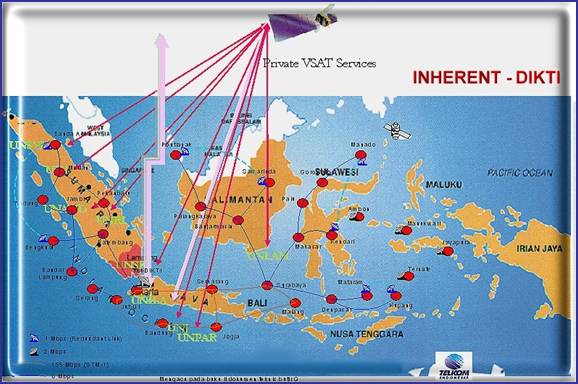
Figure 1. INHERENT-DIKTI network
Every efforts that The Government of Indonesia have taken to broader the usages of ICT in educational system can accelerate "the gap minimizing process" between the developing and developed countries, especially if this effort are supported vigorously by every educational institutions in Indonesia (state own or private educational institution).
The STATE UNIVERSITY OF Medan1
The State University of Medan (UNIMED) is one of the Indonesian state universities that located at the province of North Sumatera-Indonesia. Before becoming a university at 1999, UNIMED known as Educational Science and Teacher Institute of Medan at its establishment year on 1965. To perform it's mission, UNIMED administer 7 faculties: (1) faculty of educational science (FIP) ; (2) faculty of art and language (FBS) ; (3) faculty of mathematic and natural Science (FMIPA); (4) faculty of social science (FIS); (5) faculty of engineering (FT); (6) faculty of economy (FE); (7) faculty of sport science (FIK) and 1 post graduate program. At 2006, the total students at UNIMED are 12688 students with the ratio between the students and the lecturer stand at 14 : 1.
UNIMED efforts to develop ICT
UNIMED already started its ICT implementation since 2003, through the collaboration with the International Telecommunication Union (ITU) and MENRISTEK to build the Cisco Networking Academy Program (CNAP) as a branch from regional CNAP at Bandung Institute of Technology (ITB). This CNAP offer to give a Cisco International Certified Education (CICE) for UNIMED academia and the citizen of the province of North Sumatera. For that reason, UNIMED has sent several academic staff to participate on Cisco instructor training at Bandung, and other ICT essential workshop at Jakarta. Other education and training to improve the ICT implementation towards UNIMED academic staff also conducted through the collaboration with Seameo Regional Open Learning Center (SEAMOLEC), such as the workshop of Self Learning Material Development for e learning at 2004 and the Packaging Self Learning Materials for e-Learning at 2005. The UNIMED integrated database management system (IDMS) also has been launched at 2005 along with the legalized process of Microsoft software that cost UNIMED up to 70 million Rupiah per year (equal to US$ 7,364.42 per year). Other negotiations that still in progress are with the Toshiba Corporation, regarding the technical support for its product and the implementation of using the Microsoft Learning Gateway with Microsoft Indonesia.
Table 1: Microsoft Software Licensees for UNIMED
Microsoft Part Number |
Product Description |
C27-00002 |
Dstp Campus All Lang L/SA |
659-00837 |
Vstudio.NET Pro Win 32 All Lang Lic/SA |
D87-01057 |
Visio Pro All Lang L/SA |
P73-00203 |
Windows Svr Std All Lang L/SA |
B23-03690 |
Windows Pro All Lang WAH |
269-03280 |
Office Pro All Lang WAH |
659-01121 |
Vstudio.NET All Lang WAH |
D87-00112 |
Visio Pro All Lang WAH |
License Total Price per year in Rupiah |
70,000,000 |
In order to stay in touch with the newest development in ICT, UNIMED has sent several academic staff to attend workshop, such as:
-
MS-SQL server 2005 and VB.Net training in the year 2005. With this training, the UNIMED-ICT team can improve their ability to manage the enterprise scale database with the help of the new Microsoft program tools based on the DOT.NET framework.
-
Workshop regarding the development of e-Learning material with SEAMOLEC at 2004-2005.
-
Workshop regarding ASP programming script at 2005, this workshop was attended by the new member of UNIMED-ICT team to strengthen UNIMED web application unit to build ASP script based web content.
-
Off line application system training as part of IDMS implementation for local area network (LAN) used.
The development of integrated database management system (IDMS) composed in several stages, such as system planning in 2003; models construction in 2004; off-line system implementation in 2005; LAN implementation in 2006 and followed by Wide Area Network (WAN) by the end of 2006. With this IDMS, UNIMED can perform the academic and administration process efficiently. For instance, UNIMED can reduce the time for student selections thorough interest and achievement path from 1 week to 1 day.
Several faculty departments that received DIKTI competition grand to develop ICT also have responded by doing several improvements towards their internal management. The Library responded by applying Online Public Access Computer (OPAC) for UNIMED academia. Others memorandums of understanding (MoU) also have been signed in order to boost up the use of ICT. At the year 2006, UNIMED already signed a MoU with the national telecommunication company (TELKOM) to implement the smart campus network package. If this MoU worked as plan, then the utilization of ICT at UNIMED can be shifted from the classic learning process (instructor centric) or site based learning system towards the virtual class learning system (cyber campus). Hopefully, with this Cyber Campus (CC), UNIMED can fulfill the educational needs from the people that have limitation regarding the financial, distance etc.
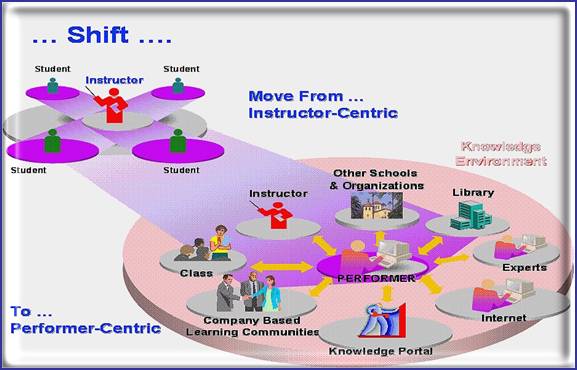
Figure 2. Shift Learning Process (Saragih, 2006)
The utilization of ITC at UNIMED
The utilization of ICT at UNIMED were implicitly started at 2001, as the UNIMED academic and administration data already digitized and followed by the launch of www.unimed.ac.id by the end off 2002. The ratio of UNIMED students to computers stand at 24 : 1 and expected to be scaled down to 20 : 1 by the end of 2006. These computers are used to perform the administration process, learning process (analysis, concept design and development) and computer programming. Hence, the price of computer and its peripherals tend to be less expensive in the future then in the future, UNIMED expected to lower this ratio. As an illustration the average price of 1 unit (non- branded) computer with the specification: Intel Pentium IV, 3.xx GHz processor; 512 MB RAM; 120 GB hard disk; CD/DVD-RW; and 15 inch flat monitor is around 8 million Rupiah (Less than US$ 900).
To intensify the use of ICT at UNIMED, several faculties lecturer that have been signed as ICT-task force, already modified their teaching materials by making handout course and assignment that can encourage the students to use the internet. Although the attending class still use the classic learning system, but it has been enhanced by the use of LCD and tablet pc. For example, at the civil engineering department, plumbing course material is specially designed and constructed in order to make the students easier to absorb the course. At the management department of FE, the ICT-task force lecturer enhanced its "introduction to management" course by escalating the presentation from standard Microsoft power point template towards "Real Player" looks alike in order to trigger the student’s interest to improve their knowledge regarding the Microsoft Software. These things can be achieved by making assignment towards the students that can lead them to present the assignment with the use of LCD provided by the ICT-task force lecturer.

Figure 4. Plumbing material course for civil engineering department-UNIMED (Rahman, 2004)
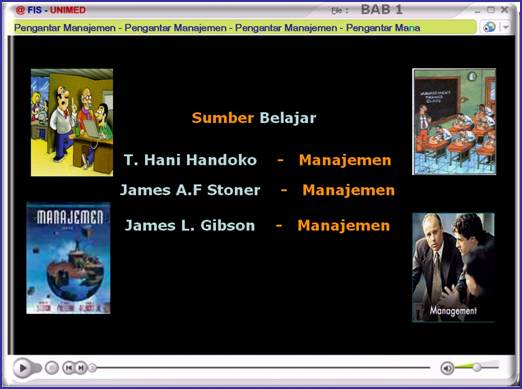
Figure 5. Enhanced "introduction to management" presentation material (Armananty, 2005)
These modified handout course and class meeting are constructed as the preparation for the launch of wireless broadband connection that expected to be running by the end of 2006. This connection is provided with the collaboration between UNIMED and ASTInet TELKOM to execute 2 Mbps wireless dedicated broadband services for UNIMED academia. To enhance the commitment, UNIMED already prepared the campus network architectures and other related requirements to make the process easier. For that services TELKOM charge UNIMED up to 7.92 million Rupiah (equal to US$ 833.68) annually.
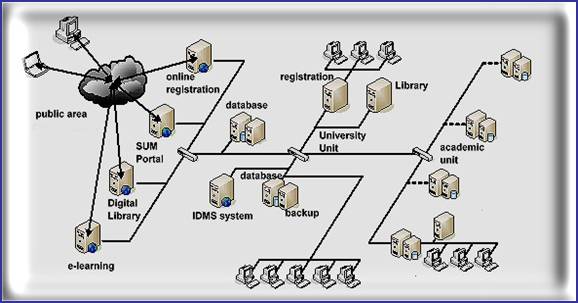
Figure 6. Campus Network Architectures (UNIMED, 2006)
The sustainability of ICT at UNIMED
To maintain the sustainability of ICT, UNIMED constantly evaluate and monitor the usage of ICT by its academia. These steps are taken by the ICT-team to see the improvement of the ongoing efforts that have been achieved by UNIMED. Based on the consideration that future development of ICT at UNIMED will no longer depend on The Government of Indonesia budget, UNIMED has determined several options of ICT utilization that can generate revenue. These decisions are taken with the help off decision support system (DSS) software Powersim Studio Express 2005 (Powersim, 2005) that able to describe the most "real things" that could happen regarding the ICT related decisions. Those decisions are:
-
To maximize the use of cyber cafe that going to be launch at 2007. This cyber cafe is intended to help the Warintek 2000 facility that not able to accommodate the student needs in term of using the internet. This facility is equipped with 58 computers that connected to TELKOM wireless broadband services. With 10 hours of operation time, 2,500 Rupiah per hour of charging time and 50 % computers usage, this facility could generate revenue up to 261 million Rupiah (US$ 27,473.68) per year.
-
To implement the e-mail services. This decision is taken based on the consideration that all UNIMED students and lectures must have the institution e-mail (e.g. xxx@unimed.ac.id) as an UNIMED academia proven identity. For this service, UNIMED charge them 60,000 Rupiah (US$ 6.3) per year. With these services, UNIMED could generate revenue up to 815.1 million Rupiah (US$ 85,800) per year.
If the simulation time adjusted according to the time of DIKTI strategic plan (HELTS 2003-2010), then by the end of 2010, UNIMED could generate revenue up to 5.98 billion Rupiah (US$ 630,060.72).
Table 2: Income Expectation from ICT

In order to make this simulation, the first step was to construct the UNIMED students and lecturers models. These models determine the variables (UNIMED students and lecturers) that can generate revenue from the utilization of ICT at UNIMED. With the students increasing and graduation rate stand at 5.03 % and 7.14 % per year, then at 2010 the total students of UNIMED reach up to 11,884.85 students. On the other side with the lecturers increasing and retirement rate stand at 7.80 % and 0.67 % per year, then at 2010 the total lecturers reach up to 1,088.87. (Figure 7 and Figure 8)
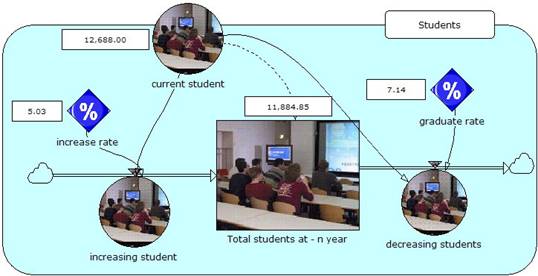
Figure 7. Simulation of UNIMED Students 2006-2010
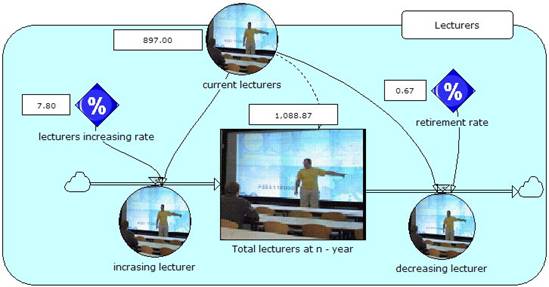
Figure 8. Simulation of UNIMED Lecturers 2006-2010
The next step was to construct the models regarding the determined decisions option. The best thing in using this DSS software is its ability to adjust the independent variable (e.g. % computers usage, e-mail services tariff per month) instantly, validate the variables causality and present the results in many ways (table format, graph format and picture format). The first model is the cyber cafe facility model. In these models, the input variables consist of: (1) the charging tariff of cyber cafe usage, which determined at 2,500 Rupiah per hour; (2) the operation time of the cyber cafe, which determined for 10 hours operation; (3) the amount of computer at the cyber cafe, which determined for 58 units. The simulation result of these variables (Figure 9) shows that in the year of 2010 the UNIMED cyber cafe facility could generate revenue up to 783 million Rupiah (US$ 82,421.05)
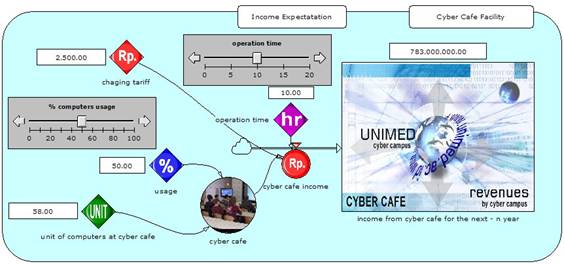
Figure 9. Simulation of revenue from cyber cafe 2006-2010
The second model is the email services model. In this models the input variables consist of: (1) the total UNIMED student at – n year (which is taken from the previous simulation result as shown by Figure 7); (2) the charging tariff for the email services per month which is determined at 5,000 Rupiah per month; (3) the total UNIMED lectures at – n year (which is taken from the previous simulation result as shown by Figure 8). The simulation result of these variables (Figure 10) shows that in the year of 2010 the UNIMED cyber cafe facility could generate revenue up to 5,202.58 million Rupiah (US$ 547,639.67)
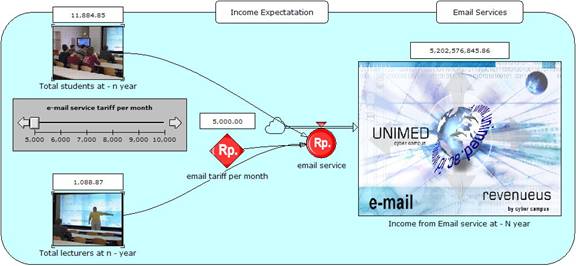
Figure 10. Simulation of revenue from e-mail services 2006-2010
With the same process, UNIMED also construct the total ICT-expenses models (Figure 11)

Figure 11. Simulation of ICT expenses cost 2006-2010
With these models, the State University of Medan (UNIMED) could predict:
- The Total Maintenance cost at n-year.
The total maintenance cost at n-year is consist with two variables: (1) the staff salary per month, which is, determined for 2 millions Rupiah per month; (2) the ICT maintenance staff, which is determined for 10 person. The simulation result of these variables shows that in the year of 2010, the Total Maintenance cost is up to 720 million Rupiah (US$ 75,789.47).
- The Total Electricity cost at n-year.
The Total Electricity cost at n-year maintenance cost are consist with several variables: (1) the total unit of computers at cyber cafe which is determined for 58 computers; (2) the total electricity per unit computer which is determined for 750 watt per unit; (3) the total unit of air conditioner that are used at the cyber cafe which is determined for 6 unit; (4) the total electricity per unit air conditioner which is determined for 1000 watt per unit; (5) the electricity tariff per kilowatt hour (kwh) which is determined at 625 Rupiah per kwh (taken from National Electricity Price); (6) the operation time of the cyber cafe (which is taken from the previous simulation result as shown by Figure 9). The simulation result of these variables shows that in the year of 2010, the Total electricity cost is up to 334.125 million Rupiah (US$ 35,171.05)
- The Total cost for adding computers at n-year
The Total cost for adding computers at n-year are consist with several variables: (1) the amount of computers that are going to be added per year which is determined for 100 units per year; (2) the price of 1 unit computer which is determined constant at 9 million Rupiah per year (The price of 1 unit computer in Indonesia tend to get lower every year). The simulation result of these variables shows that in the year of 2010, the total cost for adding 300 unit computers is 2,700 million Rupiah (US$ 284,210.53). With this decision, the UNIMED students to computers ratio can be scaled down from 24 : 1, to 16 : 1. (Figure 12)
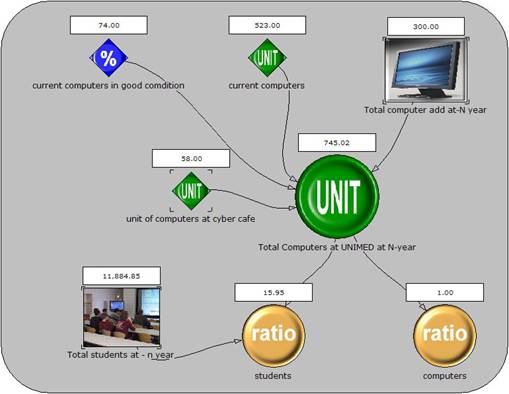
Figure 12. UNIMED student and computers ratio
- The Total cost for ASTInet fee (annual fee for using TELKOM broadband service).
This cost is related to the amount of money that needed for extending TELKOM bandwidth capacity as UNIMED already plan to double its bandwidth capacity every year. This decision is taken base on the consideration that by the end of 2008, UNIMED are ready to share its broadband services to the community within its area. This model consists with two variables: (1) the cost for doubling the bandwidth capacities per year, which is determined at 20 million Rupiah per year; (2) the ASTInet annual fee which is determined at 10 million Rupiah per year. The simulation result of these variables shows that in the year of 2010, the Total cost for ASTInet fee is up to 90 million Rupiah (US$ 9,473.68).
Table 3: ICT expenses cost

The total expenses cost (Table 3.) of UNIMED-ICT implementation at 2010 reach up to 3,844 billion Rupiah (US$ 404,644.74) and with this expenses UNIMED still has the total net worth (Table 4) from its ICT utilization up to 2,141 billion Rupiah (US$ 225,415.98)
Table 4: UNIMED net worth from ICT utilization

CONCLUSION
As one of the developing countries, The Government of Indonesia realizes that in order to improve its national competitiveness, the main assignment is to improve the educational system through the utilization of ICT. To achieve this goal efficiently is to involve all Indonesian state university that spread in to 32 provinces, hence their already have the basic resources for ICT implementation. Through DIKTI-INHERENT project called Institution Capacity Development in Information and Communication Technology, The Government of Indonesia not only can reduce the overall cost but also can share and deliver the responsibility to every state university in Indonesia for maintaining the project sustainability.
The utilization of ICT at UNIMED not only can improve its academia ability towards ICT; lowering the students and computers ratio; but also can generate revenue that can maintain the sustainability of ICT implementation. With this sustainability, UNIMED also can deliver service towards the community or other institution within their area by sharing its bandwidth capacities. With this type of implementation, all the skepticism regarding the implementation of ICT in the developing countries can be overcome.
Endnote (click on the number to return to that point in the text)
1 All data and article regarding the utilization of ICT at UNIMED are taken from "State University of Medan-Self Evaluation Report 2005".
REFERENCES
Amir, Akman & Sulaiman, Idris F. (2003). "Information and Communication Development in Indonesia (Country Report): Role of ICT in Bridging the Digital Divide in Selected Underserved Areas and Remote Regions", Paper presented at the World Summit for Information Society (WSIS) Geneva, 10-12 December 2003, Switzerland.
Armananty, Lolita D. (2005). "Introduction to Management", Unpublished management material course for management department-FE, State University of Medan (UNIMED).
DIKTI (2006). "Proposal Guidelines: Institution Capacity Development on Information and Communication Technology", Indonesian Higher Education Directorate (DIKTI), Ministry of National Education (MNE).
Powersim (2005). "Powersim Studio Express 2005", <http://www.powersim.com/services/>, Accessed on 30 January 2006.
Rahman, Haikal (2004). "Plumbing Practice", Unpublished plumbing subject material course for civil department-FT,State University of Medan (UNIMED).
Saragih, Rainbow M. (2006). "A World of Change Educational Transformation Leading the Way", Paper presented by Intel Corporation Indonesia at the Signing of MoU between SUM and National Telecommunication Company (TELKOM), Batam, Indonesia.
Copyright for articles published in this journal is retained by the authors, with first publication rights granted to the journal. By virtue of their appearance in this open access journal, articles are free to use, with proper attribution, in educational and other non-commercial settings.
Original article at: http://ijedict.dec.uwi.edu//viewarticle.php?id=221&layout=html
|